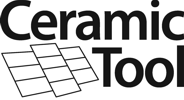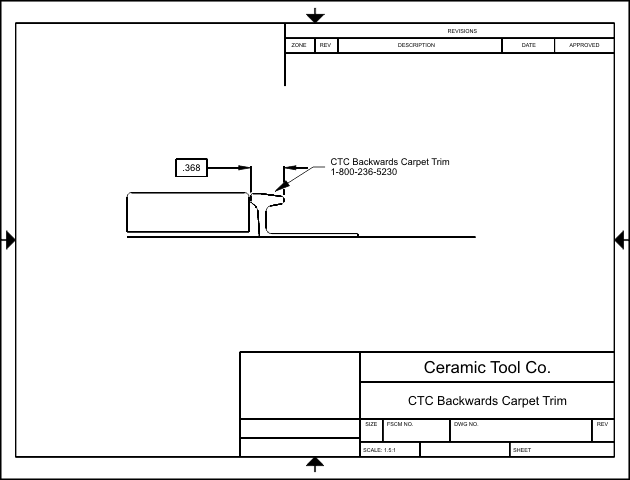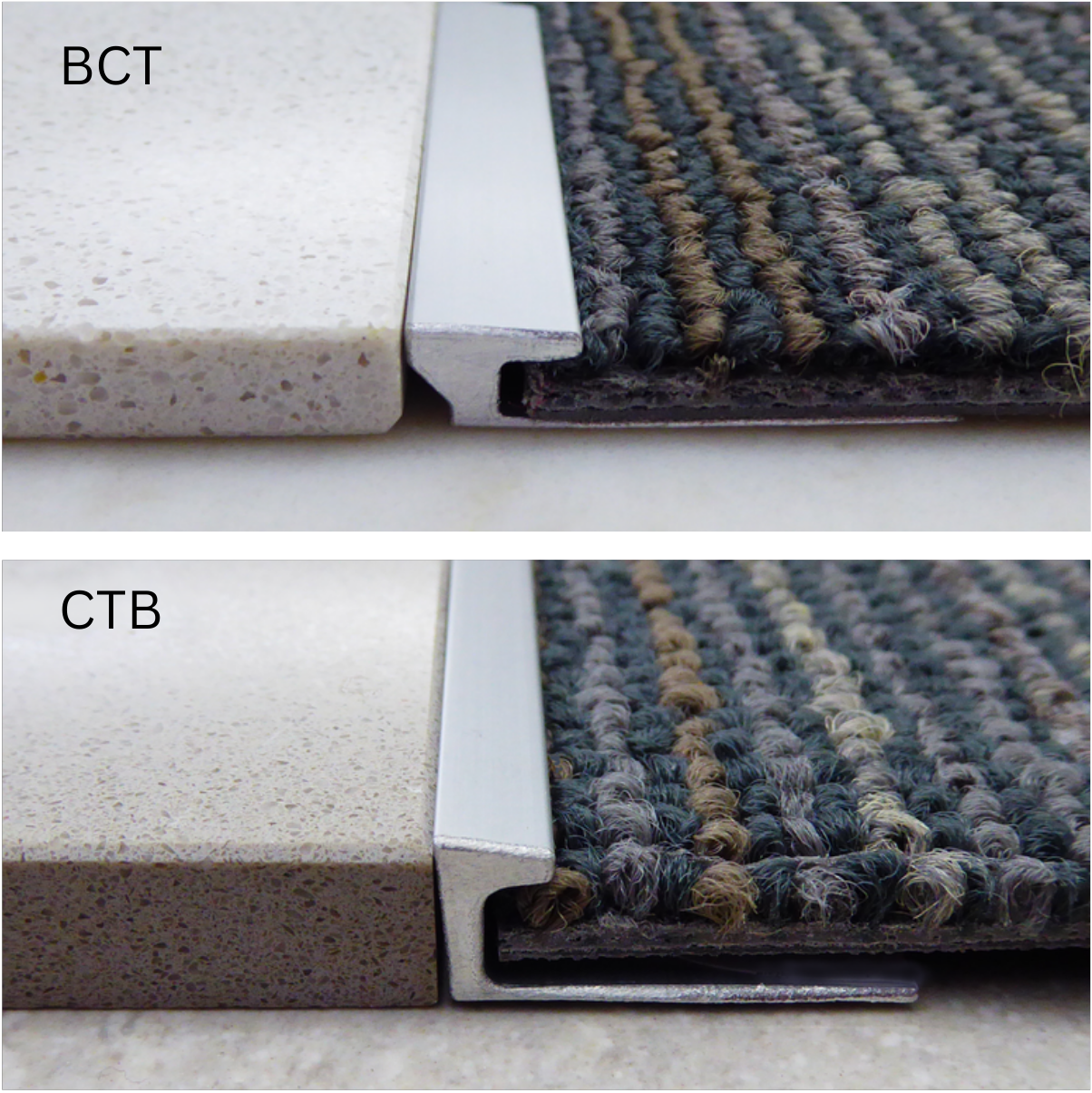
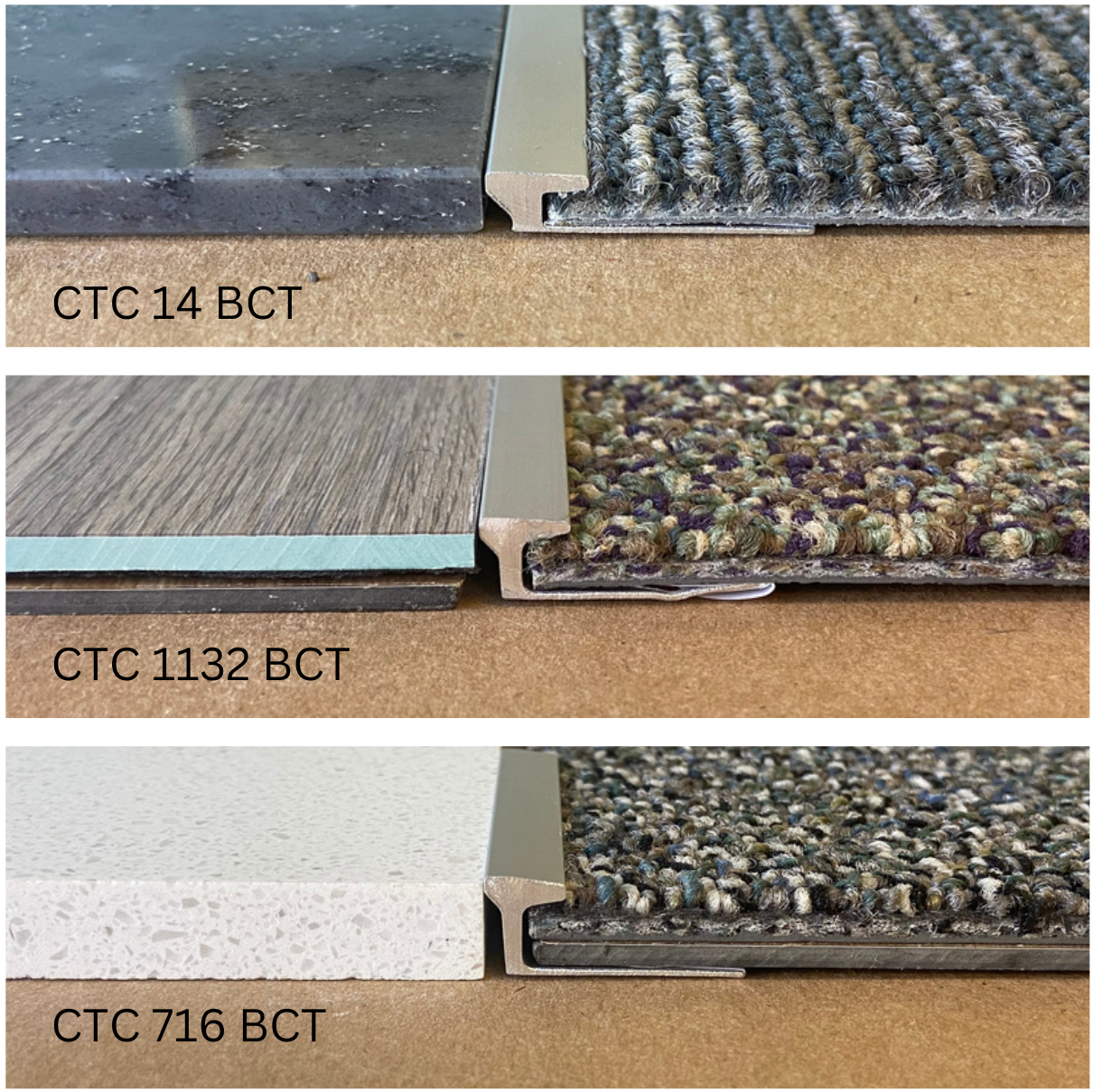
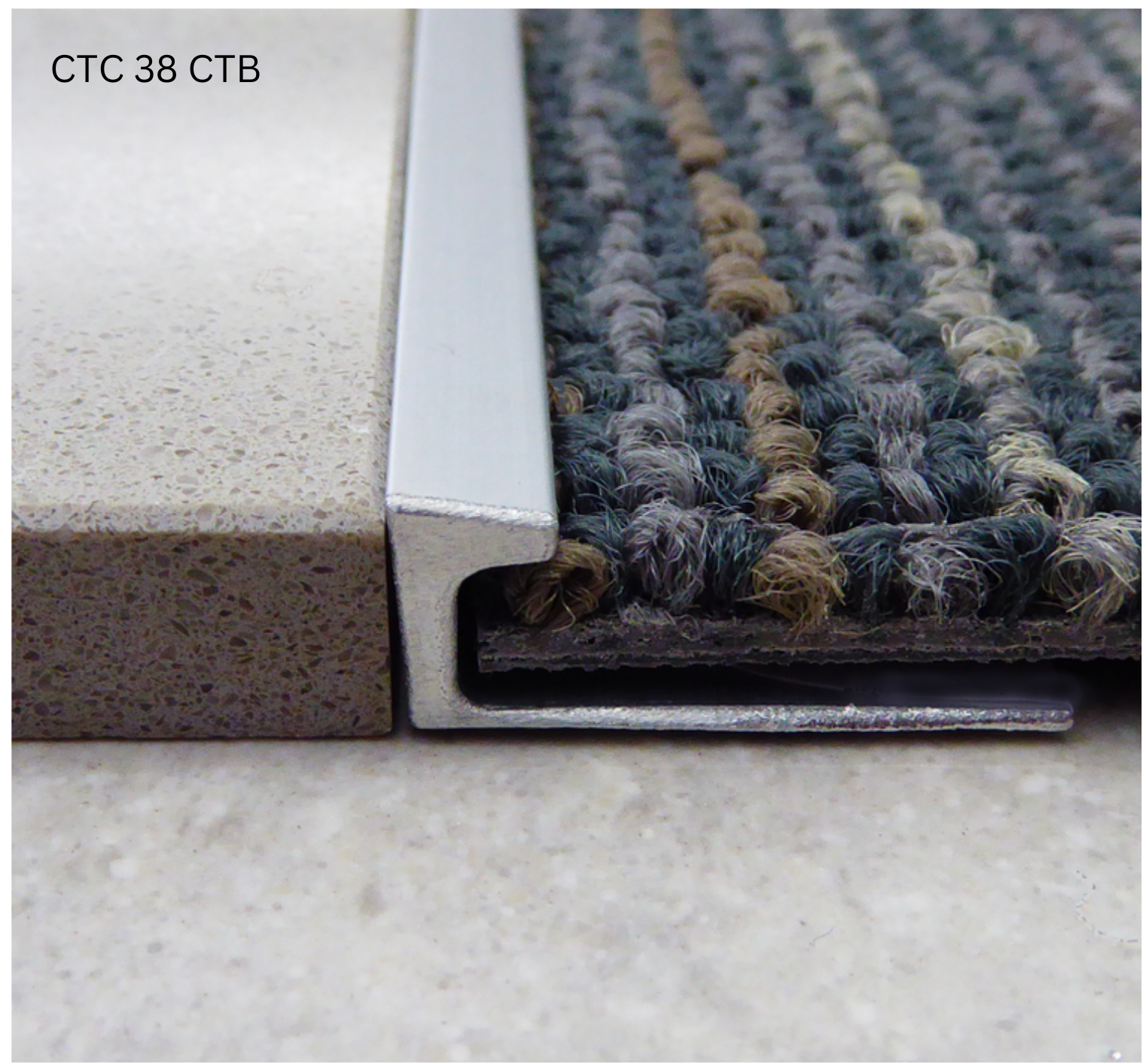
Backward Carpet Trim
2 design options
In applications where tile/hard surface flooring already exists, our backwards carpet trim is a metal transition that offers protection from a fraying carpet as well as keeping the tile edge from chipping. We designed these two anodized aluminum profiles to butt up to the existing tile, wood, or stone surface by installing the metal leg under the carpet side, with either a 3/8″ or 1/4″ wide reveal transitioning over the carpet edge for ultimate protection.
| BCT CARPET TRIM | |
| Tile Thickness | Product Code |
| 1/4" - 6mm | CTC 14 BCT |
| 11/32" - 9mm | CTC 1132 BCT |
| 7/16" - 11mm | CTC 716 BCT |
| 3/8" - 10mm | CTC 38 CTB |
- CTC Backward Carpet Trim is sold in 94" lengths
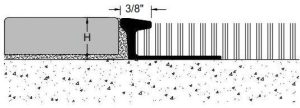
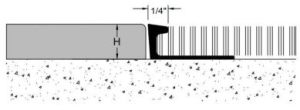

From left to right: Anodized Aluminum (Clear), Champagne (CHA), Light Bronze (BZ), Medium Bronze (MB), Dark Bronze (DB) and Black (BLK). Not all finish options are stock items, some are custom colors. Please call for more information. What is Anodizing?
BCT CARPET TRIM SPECIFICATIONS:
TILE TO CARPET TRANSITIONS
Provide anodized aluminum edge strip with 3/8″ reveal at top edge, for carpet protection and integral provision for anchorage to mortar bed or substrate. To be installed with leg under carpeting where the carpet and hard surface meet. Height to match, tile, stone or wood thickness. Available in clear & bronze finish. Manufacturer – Ceramic Tool Company
HOW TO RADIUS
CTC Trims and Transitions can easily be modified and installed in a radius or curve using the following directions as a guide.
Using a tin snips or other appropriate tool, cut the notches out of perforations in leg. The number of open holes required is dependent on the size of the radius. The more perforations that are cut the more bendable the product becomes. (If bending the CTC Joint, you will need to cut the leg on both sides.)
Then slowly bend the CTC Trim into the desired arc. CTC Transitions can be shaped for inside or outside radiuses.
We strongly suggest the use of a template to pre-shape transitions strips prior to installation. This will prevent “kinking” of materials. A template can be created out of any sturdy sheet material such as plywood or masonite.

